25000
Type of resources
Topics
Keywords
Contact for the resource
Provided by
Years
Formats
Representation types
Update frequencies
Scale
-
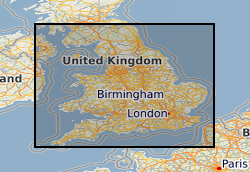
A card index storing supplementary information regarding name, operator, dates and commodity worked for each planning permission boundary recorded (drawn) on the Ministry of Housing and Local Government (MHLG) Mineral Planning Permissions Maps (see associated metadata). Information on the cards has been used to attribute the Ministry of Housing and Local Government (MHLG) Mineral Planning Permission Polygons (see associated metadata for MHLG Planning Permission Polygons).
-

The BGS database of geological maps is an index into BGS holdings of modern and historical published geological maps, geological standards and field slips, and also contains a range of other map series, including geophysical maps, geochemical maps, hydrogeological maps, thematic maps and other small-scale miscellaneous non-series maps. Historical vertical and horizontal sections, as well as indices to colours, are also included. The database comprises map metadata, including the title, theme, survey and revision years, publication years, mapped geological theme, base material, map function, colouration, approval status and the spatial extent of each map sheet. An accompanying file store contains high-resolution JPEG2000 scans for delivery, as well as various digital master and delivery formats. For a small number of maps, no scan exists. In total, the database contains over 240,000 scans of over 130,000 maps and field slips. The majority of the maps in the database cover Great Britain, but other regions are also represented, including a historical series of 1-inch maps of Ireland, 6-inch maps of the Isle of Man, 1:25 000 scale maps of the Channel Islands, and various overseas maps. The database contains a record of all geological maps produced by the British Geological Survey and its predecessors since the commencement of systematic geological mapping in the 1830s. The BGS Maps Database is mostly an archive of previous BGS maps, and is not the same as the latest BGS digital mapping. The maps within the database may differ significantly from BGS digital vector mapping. Further information about BGS digital vector mapping is available on the BGS website, under 'BGS Datasets'. The database has evolved over time, originally being a series of discrete databases. These databases have now been aggregated into a single dataset. BGS published maps, as well as 1:10 560 and 1:10 000 large-scale geological maps of England and Wales, and Scotland, are available through the BGS Maps Portal. Field slips and some thematic maps are not included on the BGS Maps Portal. The information about a map is normally a transcription from the map itself. Sometimes key information such as the title may not be actually printed on the map. Where this is the case the information is supplied in square brackets, e.g. [Kirk Maiden]. Information in square brackets means the information is supplied by the cataloguer and is not transcribed from the item.
-
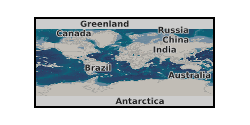
Primary Geological Data resulting from Open Cast Coal exploration in British coalfield areas. Maps showing the site outlines of opencast coal prospecting sites annotated with site reference number. Sites date back to the 1940s. Outlines drawn on 1:25000 scale topographic bases. The majority of the collection was deposited with the National Geological Records Centre by the Coal Authority in July 2001.
-

This dataset contains scans of Applied Geology Maps (AGMs) and sections, which are also known as thematic maps, Environmental Geology Maps (EGMs) or Planning for Development Maps (PfD). They were produced as part of 'Geological Background for Planning and Development' and preliminary sand and gravel projects carried out by the British Geological Survey for the Department of the Environment, Transport and the Regions (DETR), the Scottish Development Department and Scottish Office from 1975 to 1996. The maps and sections cover a number of themes (up to 22) for specific areas relating to the project area within the United Kingdom (which are mostly urban areas). Themes include simplified bedrock and superficial maps, drift thickness, drift lithology, rockhead contours and a range of mining-related themes. Each area had its own custom set of maps and were issued with an accompanying BGS Technical Report. The maps and report were sometimes issued as a pack, but for some areas they were made available separately. The geological linework and the methods used to produce the maps are those current at the time of production. Map scales are predominantly 1:10 000 or 1:25 000, with a few 1:50 000 maps. The maps have Ordnance Survey map bases and are bounded by the project area. The maps could be used for geological, engineering geological, environmental and resources research, as an information and reference resource and for inclusion in reports and papers. These maps are hard-copy paper records and digital scans, stored in the National Geoscience Data Centre (NGDC).
-
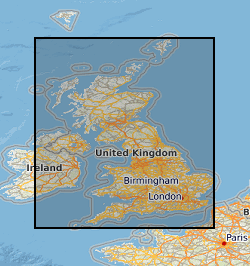
Many mineral resource maps for areas of Great Britain at scales of 1:25 000 and 1:50 000 have been produced by the British Geological Survey and its predecessors. Many of these maps were produced by the Industrial Minerals Assessment Unit (IMAU) from 1971 to 1986. Most maps cover a single 10 km x 10 km grid square, but some cover larger areas. The majority of maps are sand and gravel resource maps, but conglomerate, limestone, dolomite and celestite are also covered in certain regions. The maps show the locations of IMAU mineral resource blocks, the locations and categories of resource deposits and the locations of boreholes with indicative logs. A series of technical reports (Mineral Assessment Reports, MARs) was also created alongside the maps. Refer to the metadata entry for the Mineral Assessment Reports for more information. The maps are intended to be used for resource development, strategic planning, land-use planning, the indication of hazard in mined areas, environment assessment and as a teaching aid. The data was originally published in printed map form. The printed maps have been scanned and added to the BGS Maps Database.
-

The data overlays superficial polygons on bedrock polygons giving a representation of the geology at the surface. Sourced from 1:50000 DiGMapGB-50 Version 6 where available, augmented by additional data from the following sources in the order - new 1:25000 mapping, new 1:35000 Superficial Derived Products interpretation, 1:250000 DiGMapGB-250 Bedrock or 1:625000 DiGMapGB-625 V4 Superficial. The attributes therefore include both superficial and bedrock plus their source. The geology is fitted to a relevant topographic base at the time of production. Full Great Britain coverage is available. The data is available in vector format. BGS licensing terms and conditions apply to external use of the data.
-
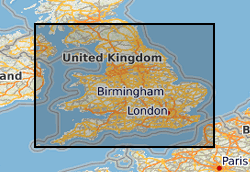
[This metadata record has been superseded, see http://data.bgs.ac.uk/id/dataHolding/13603141] These are scanned and georeferenced raster versions of the 1400 Ministry of Housing and Local Government (MHLG) Mineral Planning Permissions Maps (see associated metadata). The 1:25000 scale maps recorded hand drawn boundaries for permitted, withdrawn and refused mineral planning permissions and worked ground for every local authority area in England. Accompanying the maps is an associated card index (see metadata for MHLG Cards). The mineral planning permission polygons recorded on the maps have been digitised to create vector GIS polygons (see associated metadata for MHLG Planning Permission Polygons).
-

A series of maps at the detailed scale of 1:25 000 have been produced for areas of outstanding geological interest in Great Britain. Some maps are accompanied by explanatory booklets. The maps were published between 1954 and 2007. About 60 maps have been published, some showing solid geology, some drift geology and some combined solid and drift. Most of the maps include geological cross sections and generalised vertical sections. Geological maps represent a geologist's compiled interpretation of the geology of an area. A geologist will consider the data available at the time, including measurements and observations collected during field campaigns, as well as their knowledge of geological processes and the geological context to create a model of the geology of an area. This model is then fitted to a topographic basemap and drawn up at the appropriate scale, with generalization if necessary, to create a geological map, which is a representation of the geological model. Explanatory notes and vertical and horizontal cross sections may be published with the map. Geological maps may be created to show various aspects of the geology, or themes. These maps are hard-copy paper records stored in the National Geoscience Data Centre (NGDC) and are delivered as digital scans through the BGS website.
-
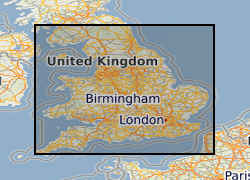
Between 2001 and 2003 BGS received approximately 1400 1:25 000 paper maps and associated card index from the Office of the Deputy Prime Minister (now Department for Communities and Local Government (CLG)). The maps, originally compiled by the Minerals Division of the Ministry of Housing and Local Government (CLGs historic predecessor), contain hand drawn boundaries for permitted, withdrawn and refused mineral planning permissions, and worked ground. They also contain hand drawn boundaries for land use at each site. These 'MHLG' maps show information collated from the 1940s (retrospectively to 1930) to the mid 1980s. The index cards provide supplementary information regarding name, operator, dates and relevant local authority. Data depicted on the maps are for England only and include; [a] all planning appeals, departures and called in cases whether permitted or refused; [b] all planning permission and refusal data for various local authority areas which were obtained by Departmental officials through visits to authorities in a staged programme spread over many years. Priority was placed on areas that were giving rise to then current casework issues thus at the time when the maintenance of the maps ended (mid 1985), some authority information had been updated recently but other areas had not been visited for many years. [c] land use present at each site. Categories include: derelict areas, restored quarries (filled and unfilled), tip heaps and spoil heaps, and wet areas. The variable completeness of the data sets should be kept in mind when this material is being used. Land use polygons have been digitised from the MHLG maps and attribute information has been provided from the map legend and the appropriate card in the card index. The principal aim of the data is to show land use present in areas of land that have been affected by the extraction of minerals.
-
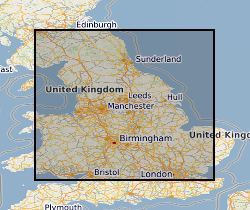
Soil samples collected in urban areas throughout the UK are analysed for their major and trace element geochemistry, their pH and organic matter content. Samples are collected at two depths; 0-15cm and 35-45cm at sites selected using a stratified, random design. The data can be used to identify and prioritize contaminated sites. In 1993, the Geochemical Baseline Survey Of The Environm (G-BASE) rural geochemical mapping programme was extended to include sampling in urban areas and to date around 22 urban centres have been sampled. Data is available on key inorganic contaminants including Cr, Cu, Cd, Ni, As, Pb, Zn, Sn and Sb. Results have been standardised to ensure seamless joins between geochemical sampling campaigns. Urban centres are selected in areas where rural sampling is undertaken or where the BGS urban programme is active. Urban centres will continue to be sampled until completion of the rural programme, scheduled for 2015.
 NERC Data Catalogue Service
NERC Data Catalogue Service